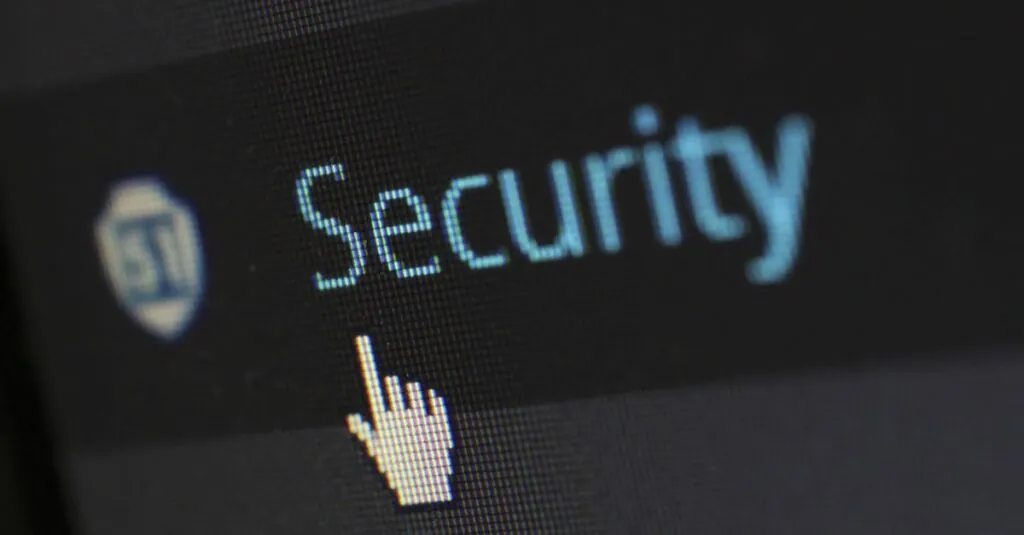Table of Contents
ToggleIn today’s digital jungle, where data breaches lurk like hungry lions, understanding Platform as a Service (PaaS) cybersecurity is essential. Companies are racing to the cloud, but without proper protection, they might as well be leaving the front door wide open with a welcome mat for hackers. Who needs a security guard when you can just hope for the best, right? Spoiler alert: that’s not a winning strategy.
Overview of PaaS Cyber Security
Understanding PaaS cybersecurity is crucial as organizations migrate to cloud solutions. Data security remains a top concern since cyber threats evolve constantly. The shared responsibility model plays a significant role in PaaS environments. Cloud providers ensure physical security and infrastructure protections, while organizations must safeguard their applications and data.
Vulnerability assessments and threat modeling are essential techniques. Regular monitoring of potential threats enhances the ability to quickly respond to incidents. Data encryption offers a robust layer of protection. Encrypting sensitive information both in transit and at rest reduces the risk of unauthorized access.
Authentication methods also require attention. Using multi-factor authentication significantly decreases the chances of account breaches. Access controls must be implemented to restrict user privileges, ensuring that only authorized personnel can access critical resources.
Regular updates and patch management form a key line of defense. Keeping software and systems up to date mitigates known vulnerabilities, reducing the window of opportunity for attackers. Implementing logging and monitoring provides visibility into activities within the application.
Incident response planning should be a priority. Developing and testing response strategies allows organizations to react swiftly to potential breaches. Organizations reduce recovery time and minimize damage with an established plan.
Education and training for staff members cannot be overlooked. Regular cybersecurity training cultivates awareness of phishing attacks and other cybersecurity risks. A well-informed workforce bolsters the overall security posture of the organization.
PaaS cybersecurity emphasizes both proactive and reactive measures. Balancing the responsibilities of cloud providers and organizations fosters a more secure cloud environment.
Common Threats to PaaS Security
Organizations leveraging PaaS must be aware of prevalent security threats that can jeopardize sensitive data and operational integrity.
Data Breaches
Data breaches represent a significant risk in PaaS environments. Cybercriminals often exploit vulnerabilities to gain unauthorized access to databases and applications. Statistics reveal that 60% of companies experience a breach within two years of cloud adoption. It’s crucial for organizations to implement robust encryption methods to protect sensitive information both at rest and in transit. Additionally, utilizing multi-factor authentication enhances access security, making it harder for attackers to compromise accounts. Regular security assessments further uncover potential weaknesses, enabling proactive measures against breaches.
Service Misconfigurations
Service misconfigurations frequently lead to security vulnerabilities. Misconfigured settings can expose critical resources and permit unintended access. Research indicates that 90% of security incidents arise from human error during configuration. Ensuring that services are configured correctly from the outset prevents unauthorized access and vulnerabilities. Regular audits of cloud configurations identify misconfigurations and remediate them promptly. Furthermore, utilizing automated tools assists in enforcing best practices and standard security settings across all services, significantly reducing the risk of exploitation.
Best Practices for Enhancing PaaS Cyber Security
Enhancing cyber security in a PaaS environment requires systematic measures. Regularly conducting security audits significantly strengthens defenses against vulnerabilities.
Regular Security Audits
Security audits evaluate systems against best practices. Organizations should schedule audits at least quarterly to identify misconfigurations. An estimated 90% of security incidents arise from human error, underscoring the need for regular assessments. Automated tools streamline the auditing process, making it easier to detect and rectify weaknesses. Audit reports guide teams in implementing necessary changes. Proactive audits ensure compliance with industry standards and help in maintaining a secure cloud infrastructure.
Implementation of Strong Access Controls
Access controls determine who can view or modify information. Strong authentication methods, such as multi-factor authentication, provide an added layer of protection. Limiting user privileges reduces the risk of data exposure. Role-based access controls ensure users only access what they need. Regularly reviewing these access privileges prevents unauthorized access. Furthermore, implementing identity management solutions simplifies the process of managing user access securely. Each of these measures contributes to strengthening overall PaaS security.
Tools and Technologies for PaaS Cyber Security
PaaS environments require a robust set of tools and technologies to ensure cybersecurity. Implementing effective solutions is crucial for safeguarding data and applications.
Security Information and Event Management (SIEM) Tools
SIEM tools aggregate and analyze security data from various sources within PaaS platforms. Heuristic algorithms identify anomalies that indicate potential threats. These tools provide real-time monitoring, which enhances incident detection capabilities. Compliance reporting features help organizations adhere to regulations, ensuring data security standards are met. Notably, many SIEM tools support automated responses, allowing quick remediation of identified threats. Popular choices include Splunk, IBM QRadar, and LogRhythm. They enable organizations to enhance their overall security posture through centralized visibility into application activities.
Identity and Access Management (IAM) Solutions
IAM solutions play a vital role in controlling user access to PaaS resources. They manage user identities and enforce authentication policies, mitigating unauthorized access risks. Role-based access controls are essential features in IAM systems, ensuring users only access data relevant to their role. Moreover, implementing multi-factor authentication adds an additional layer of security, significantly reducing the likelihood of credential theft. Leading IAM solutions, like Okta and Microsoft Azure Active Directory, streamline user provisioning and de-provisioning processes. Organizations can strengthen their security framework by investing in advanced IAM technologies to protect sensitive information.
Future Trends in PaaS Cyber Security
Emerging trends in PaaS cyber security will shape how organizations protect their cloud-based applications. Continuous innovation in threat detection technology enhances the ability to identify vulnerabilities in real time. Artificial intelligence and machine learning increasingly play a crucial role in automating threat responses, improving speed and accuracy.
Zero Trust architecture gains traction as organizations seek to minimize unauthorized access. By verifying users at every access point, Zero Trust principles ensure that only authorized personnel can access sensitive data. Multi-cloud environments become more common, leading to the need for cross-platform security strategies that account for varying security postures.
Increased regulatory scrutiny drives organizations to invest in compliance and data protection measures. GDPR and CCPA, among others, emphasize the importance of data privacy, making robust security protocols essential. Identity and Access Management solutions continue to evolve, allowing for granular control over user permissions and enhancing overall security posture.
Additionally, container security emerges as a key focus area with the rise of microservices. As organizations adopt containerization, securing these environments becomes vital, influencing how applications are developed and deployed. Regular security audits and vulnerability scanning of containerized applications gain importance to mitigate risks associated with misconfigurations.
Organizations will prioritize threat intelligence sharing to gain insights from the broader security community. By collaborating and sharing information, they can enhance their defenses against emerging threats. Finally, continuous education and training for personnel on the latest cyber threats play a significant role in building a resilient security culture within organizations.
Conclusion
PaaS cybersecurity is a critical aspect of modern cloud strategies. Organizations must prioritize security measures to protect their applications and data from evolving threats. By adopting a proactive approach that includes regular audits and robust access controls, companies can significantly reduce their vulnerability to breaches.
Investing in advanced tools such as SIEM and IAM solutions further enhances security posture. As the landscape continues to shift with new technologies and regulations, staying informed and adaptable is essential. Building a culture of security awareness among staff ensures that everyone plays a role in safeguarding sensitive information. A comprehensive strategy will not only protect against current risks but also prepare organizations for future challenges in the PaaS environment.




